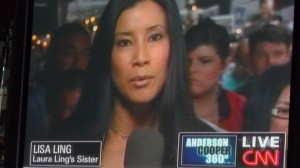Immortality, privatized space travel, organ ‘printing,’ seasteading, geoengineering, DIY human biology, and augmented humanism are some of the futurological imaginaires of a group of elite new media professionals and social entrepreneurs in Los Angeles. The values associated with these interests intersect with the ethics of technoprogressivism, the utopianism of transhumanism, and the social history of technolibertarianism. Transhumanism is an intellectual and cultural movement fastidiously committed to biosocially engineering a utopia absent of poverty, boredom, isolation, class strife, illness–even physical death. A fundamental idea of transhumanism is the singularity, a theoretical future point where accelerating computer-processing speed will lead to ever-increasing scientific innovation. Technoprogressives support the ethical convergence of technological and social change. Technolibertarianism emerges from a bourgeois bohemian ideology to advocate for freedom and individualization of markets, technoscience, and social policies.
Using emergent technologies as profitable as well as political tools, these new media social entrepreneurs make or distribute visual and social media about transformative and experimental natural, biological, physical, and social sciences. Examples of systems they make include for-profit and NGO social platforms for medical providers and patients, documentaries about the science of human longevity, and next generation mobile technologies for philanthropic fundraising. In other cases, new media social entrepreneurs are not the engineers of technology but the early adopters, “social broadcasters,” and popularizers of the philosophy of transhumanism and technoprogressivism. Key examples I research include the technoscience of immortality, the social mediation of health care systems, the privatization of space exploration, ocean terraforming, and the “controlled serendipity” of “social broadcasting.” Based on a mix of ethnographic methods consisting of nonfiction production, conference participation, and virtual and actual socializing this research describes how science, technology, media, and sociality intersect in the futurological imaginaries, professional practices, and political economics of new media social entrepreneurs.
An Anthropology of Values
It takes years of study and practice before one even understands what the hell anthropology is or can become. For example, as a transplant from cinema and media studies to anthropology I’d been doing this ethnographic research on new media makers and I was increasingly confused by what made this work anthropology and not something else. Sure, I questioned my informants about their practices, politics, and class—and I made nonfiction videos with them—but all my conclusions seemed rather topical and antiseptic. It didn’t look at all like anthropology. Late last year I asked an informant who had just been fired from a job what was her biggest success and largest failure at her previous position. The question provoked the mediasmith to tell a detailed story of collaboration, struggle, and ambition and to reflect on the conflicting personal and corporate values. The question got me nearer to ‘culture’ than my questionnaire about class and education. This provoked me to engage more with my informants’ off-work passions, readings, hobbies—in the hopes of identifying core values—and less with the technical aspects of their non-fiction and entrepreneurial business operations. Above are some of my zygote findings.
 py to oblige Stelter’s creativity and I’ll accept the flattery with the imitation. Today, I will continue the analysis of this crisis in the direction of looking at the relationship between individual and institutional cultural capital.
py to oblige Stelter’s creativity and I’ll accept the flattery with the imitation. Today, I will continue the analysis of this crisis in the direction of looking at the relationship between individual and institutional cultural capital.